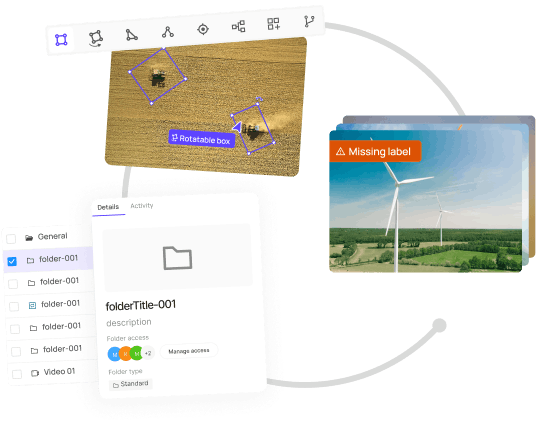Human Pose Estimation
Encord Computer Vision Glossary
Human pose estimation is a task in computer vision that involves detecting and estimating the positions of various body parts in an image or video of a person. This can be used to understand the posture, movement, and behavior of the person, as well as to enable applications such as human-computer interaction, video surveillance, and sports analysis. Human pose estimation can be done using a variety of techniques. Utilizing machine learning algorithms to discover the features of various bodily components and their relationships with one another is a common approach. This may entail developing a model using a set of labeled pictures or videos where the body parts' locations have been manually noted. The positions of the body components in fresh, previously unseen photos or videos can then be predicted using the trained model.
Another approach to human pose estimation involves using geometric models to represent the body and its parts, and fitting these models to the images or videos. This can involve estimating the positions of keypoints, such as the joints, and using these to infer the positions of other body parts.
Human pose estimation can be a challenging task, particularly in situations where the person is occluded or the lighting conditions are poor. It can also be difficult to accurately estimate the poses of people with large variations in body size or shape. To improve the accuracy and robustness of human pose estimation algorithms, it is often necessary to use large, diverse datasets and advanced machine learning techniques.

How do you do human pose estimation for machine learning?
Human pose estimation can be done using a variety of techniques. Utilizing machine learning algorithms to discover the features of various bodily components and their relationships with one another is a common approach. This may entail developing a model using a set of labeled pictures or videos where the body parts' locations have been manually noted. The positions of the body components in fresh, previously unseen photos or videos can then be predicted using the trained model.
Another approach to human pose estimation involves using geometric models to represent the body and its parts, and fitting these models to the images or videos. This can involve estimating the positions of keypoints, such as the joints, and using these to infer the positions of other body parts.
Human pose estimation can be a challenging task, particularly in situations where the person is occluded or the lighting conditions are poor. It can also be difficult to accurately estimate the poses of people with large variations in body size or shape. To improve the accuracy and robustness of human pose estimation algorithms, it is often necessary to use large, diverse datasets and advanced machine learning techniques.